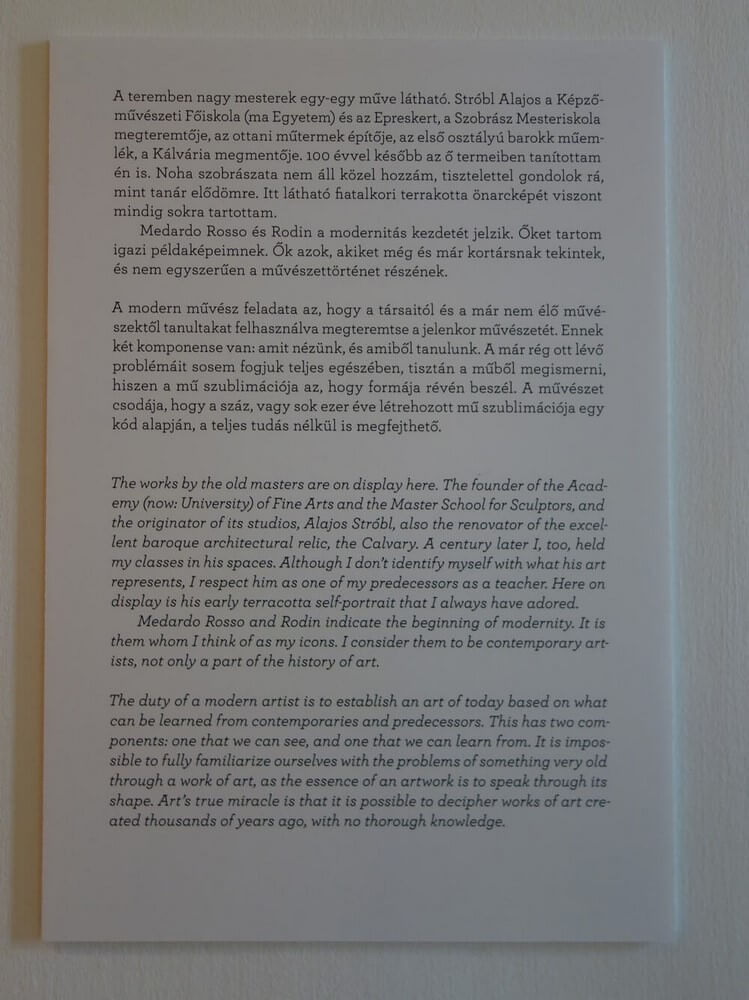Nagy mesterek művei
Sarokterem
A teremben nagy mesterek egy-egy műve látható. Stróbl Alajos a Képzőművészeti Főiskola (ma Egyetem) és az Epreskert, a Szobrász Mesteriskola megteremtője, az ottani műtermek építője, az első osztályú barokk műemlék, a Kálvária megmentője. 100 évvel később az ő termeiben tanítottam én is. Noha szobrászata nem áll közel hozzám, tisztelettel gondolok rá, mint tanár elődömre. Itt látható fiatalkori terrakotta önarcképét viszont mindig sokra tartottam.
Medardo Rosso és Rodin a modernitás kezdetét jelzik. Őket tartom igazi példaképeimnek. Ők azok, akiket még és már kortársnak tekintek, és nem egyszerűen a művészettörténet részének.
A modern művész feladata az, hogy a társaitól és a már nem élő művészektől tanultakat felhasználva megteremtse a jelenkor művészetét. Ennek két komponense van: amit nézünk, és amiből tanulunk. A már rég ott lévő problémáit sosem fogjuk teljes egészében, tisztán a műből megismerni, hiszen a mű szublimációja az, hogy formája révén beszél. A művészet csodája, hogy a száz, vagy sok ezer éve létrehozott mű szublimációja egy kód alapján, a teljes tudás nélkül is megfejthető.
Corner Room
The works by the old masters are on display here. The founder of the Academy (now: University) of Fine Arts and the Master School for Sculptors, and the originator of its studios, Alajos Stróbl, also the renovator of the excellent baroque architectural relic, the Calvary. A century later I, too, held my classes in his spaces. Although I don’t identify myself with what his art represents, I respect him as one of my predecessors as a teacher. Here on display is his early terracotta self-portrait that I always have adored.
Medardo Rosso and Rodin indicate the beginning of modernity. It is them whom I think of as my icons. I consider them to be contemporary artists, not only a part of the history of art.
The duty of a modern artist is to establish an art of today based on what can be learned from contemporaries and predecessors. This has two components: one that we can see, and one that we can learn from. It is impossible to fully familiarize ourselves with the problems of something very old through a work of art, as the essence of an artwork is to speak through its shape. Art’s true miracle is that it is possible to decipher works of art created thousands of years ago, with no thorough knowledge.
Exhibited in:

